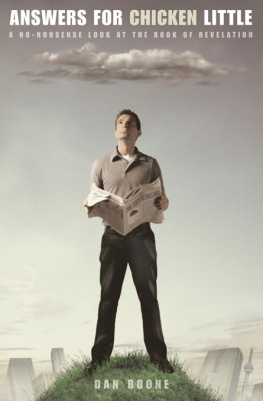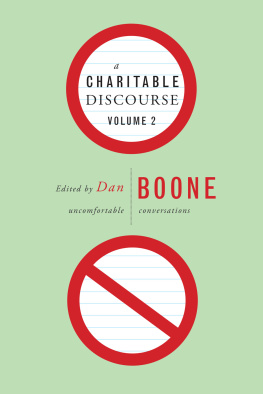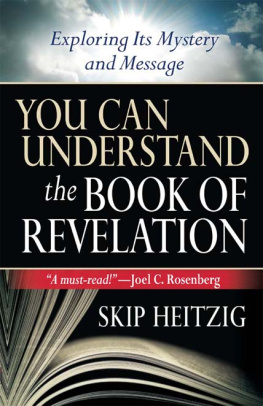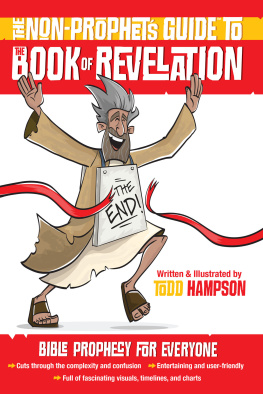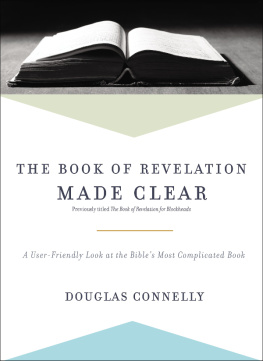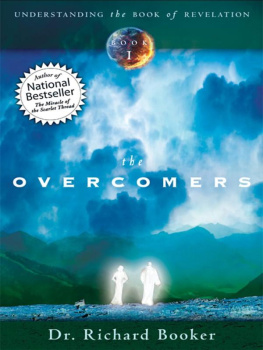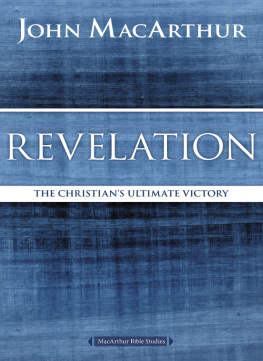

Copyright 2005
by Dan Boone and Beacon Hill Press of Kansas City
2013 eISBN: 978-0-8341-3082-1
Printed in the
United States of America
Cover Design: Brandon R. Hill
All Scripture quotations not otherwise designated are from the New Revised Standard Version (NRSV) of the Bible, copyright 1989 by the Division of Christian Education of the National Council of the Churches of Christ in the USA. Used by permission. All rights reserved.
Scripture marked NIV is from the Holy Bible, New International Version (NIV). Copyright 1973, 1978, 1984 by International Bible Society. Used by permission of Zondervan Publishing House. All rights reserved.
Library of Congress Cataloging-in-Publication Data
Boone, Dan, 1952
Answers for chicken little: a no-nonsense look at the Book of Revelation / Dan Boone.
p. cm.
Includes bibliographical references.
ISBN 0-8341-2219-7 (pbk.)
1. Bible. N.T. RevelationCriticism, interpretation, etc. I. Title.
BS2825.52.B66 2005
228'.06dc22
2005026040
CONTENTS
Most Christians have given up hope of understanding the last book of the Bible. Like novices reading a complex legal document, they have surrendered to the experts. After all, what average believer is competent to delve into the mysteries of the Revelation of Jesus to John?
I asked a friend to pick up the Bible and read the 22 chapters. He informed me that he no longer read the book called the Revelation. Why? Not due to a lack of interest, but lack of confidence. The book is just too confusing, too complicated, and too contestedor is it?
At the core of what I believe about the Bible is this simple factthe Scriptures are for the people of God. The Spirit of God is at work in the simplest soul who sets out to read the record of Gods saving activity. The perplexing muddle of current-day Middle Eastern prophecies and popular end-time novels should not deter us from reading the book for ourselves.
In writing this book about the Revelation of Jesus to John, I claim no special revelation, vision, or dream. I claim no discoveries from a Hebrew numerical code that spells out names like Hussein or Hitler. I claim no millennial mystique, no time lines or Antichrist sightings, no credentials as an end-time specialist or prophecy guru. If you are standing in the bookstore browsing for a book that predicts the end of the world, browse on past this one. But before you browse on, please listen to what I do claim.
I believe that present-day pastors of real people have the best vantage point for interpreting the Revelation. These ancient texts accompany me in the daily tasks of ministry; today I prayed with an elderly couple in their living room, helped a woman plan her husbands funeral service, calmed an anxious widow by singing a Revelation tune, ate lunch with a man who shut down his failed business last Friday, and prepared a sermon for an interracial congregation. I reclaimed the Revelation for folk like these.
I also claim that this sacred book, first and foremost, meant something to the seven churches to whom it was written. To leapfrog them as if they never existed and to treat the Revelation as if John were imagining an audience of 21st-century Americans is to do a great injustice to the Bible. We live in a wild, whacky age where the gap between popular religious speculation and biblical scholarship has widened to Grand Canyon proportions. Because an author has a popular book series or a preacher can afford airtime, is it right to conclude that he or she is an expert? Wide acceptance of a theory does not relieve us of the call to read the Revelation for ourselves with an understanding of its context.
I intend no disrespect toward the authors, preachers, and filmmakers with whom I pointedly disagree. They are my brothers and sisters in Christ. And you may know them far better than you know me. But the people who do know mebecause I have visited their sick, dedicated their infants, buried their dead, prayed for their needs, and lived among them for 13 yearsthese good people, of College Church of the Nazarene in Bourbonnais, Illinois, suggested that I write these pages for you. Together we have discovered that the Revelation of Jesus is not speculative or sinister, but full of hope. I invite you to join us as we hope for the best.
Dan Boone
February 23, 2005
Note: The last chapter of this book deals with the more technical issues of apocalyptic and prophetic literature. If you are considering this book for group study or sermon preparation, you should begin with the endwhich, interestingly, is also how we ought to live.
I m a Chicago Bulls basketball fan. My hopes were formed during the Michael Jordan era. We hoped for a championship every year and usually got ituntil Michael retired the second time. Some of us who saw him come back once from retirement hoped for a second coming. But when Air Jordan closed his locker the final time, our hopes plummeted to the earth. We Bulls fans have been working hard at not getting our hopes up anymore. (Youd think that would be easy in a city where the Chicago Cubs have perfected the art of smashing hope.)
Dont get your hopes up. Thats what we say to each other as a warning against inflationary expectation. The higher our hopes climb, the harder they fall. Its dangerous to risk a fall of humpty-dumpty proportions. Few people specialize in putting shattered hope back together again.
Have you ever heard someone predict the second coming of Jesus? Have you ever read a book that connected the dots between world events and the biblical text of the Revelation of Jesus to John? I suggest that people who interpret the Book of the Revelation as a time line of the end are manipulating our hopes. They tell us
the Antichrist is here
the blocks of the new Temple are already cut
Armageddon is just around the corner
the mark of the beast is a computer chip installed under our skin
They speak of these things as warnings to the unprepared and good news to the ready-to-be-raptured. Yet, for the life of me, these predictions dont get my hopes up anymore. I guess Im old enough now to know some history.
It is December 31, 999, the eve of the new millennium a thousand years ago. The people believe that at the stroke of midnight, evil will sweep the earth. Chaos and madness will halt civilization as they know it. Pope Sylvester II will lead the last mass of human history. Desperation, anxiety, pandemonium, and fear flood streets and hearts. Why? Because Rev. 20:7-8 says, When the thousand years are ended, Satan will be released from his prison and will come out. The idea of the devil on unrestricted parole is bad news. The only good news in sight is the hope of Christs return. But on January 1, 1000, the sun came up and life went on as usual. And all the people knew they shouldnt have gotten their hopes up.
It is the year 1843. A New England farmer/preacher, William Miller, has cracked the code of the Revelation sort of. Hes figured out when Christ will return. Using the Jewish calendar and apocalyptic writings (Daniel and the Revelation), he has narrowed his prediction to the very day. Over 100,000 people believe him. Hope skyrockets. They sell all their possessions and go up on a hill to await the Rapture. They waitall day, all night. The sun came up the next morning, and life went on as usual. And all the people knew they shouldnt have gotten their hopes up.
It is the year 1988. We are given 88 Reasons Why Jesus Will Return in 88. Church attendance soars. Pastors never have to beg for help in the nursery. People are hedging their betsjust in case. Believers update their spiritual rsums in preparation for judgment. The author of 88 Reasons is a scientist/mathematician. Maybe a guy with a calculator will succeed where Greek and Hebrew scholars have failed.
Next page
